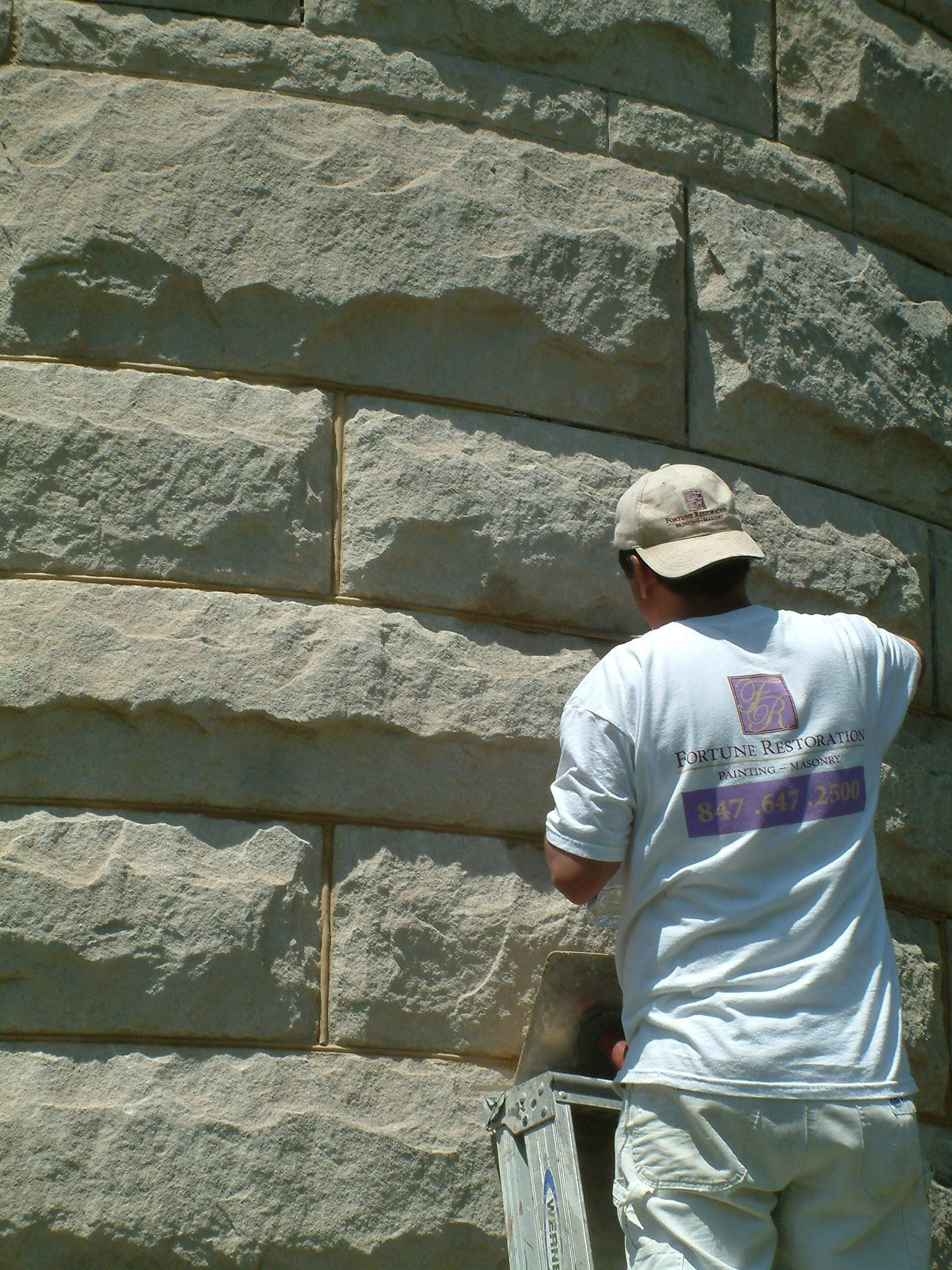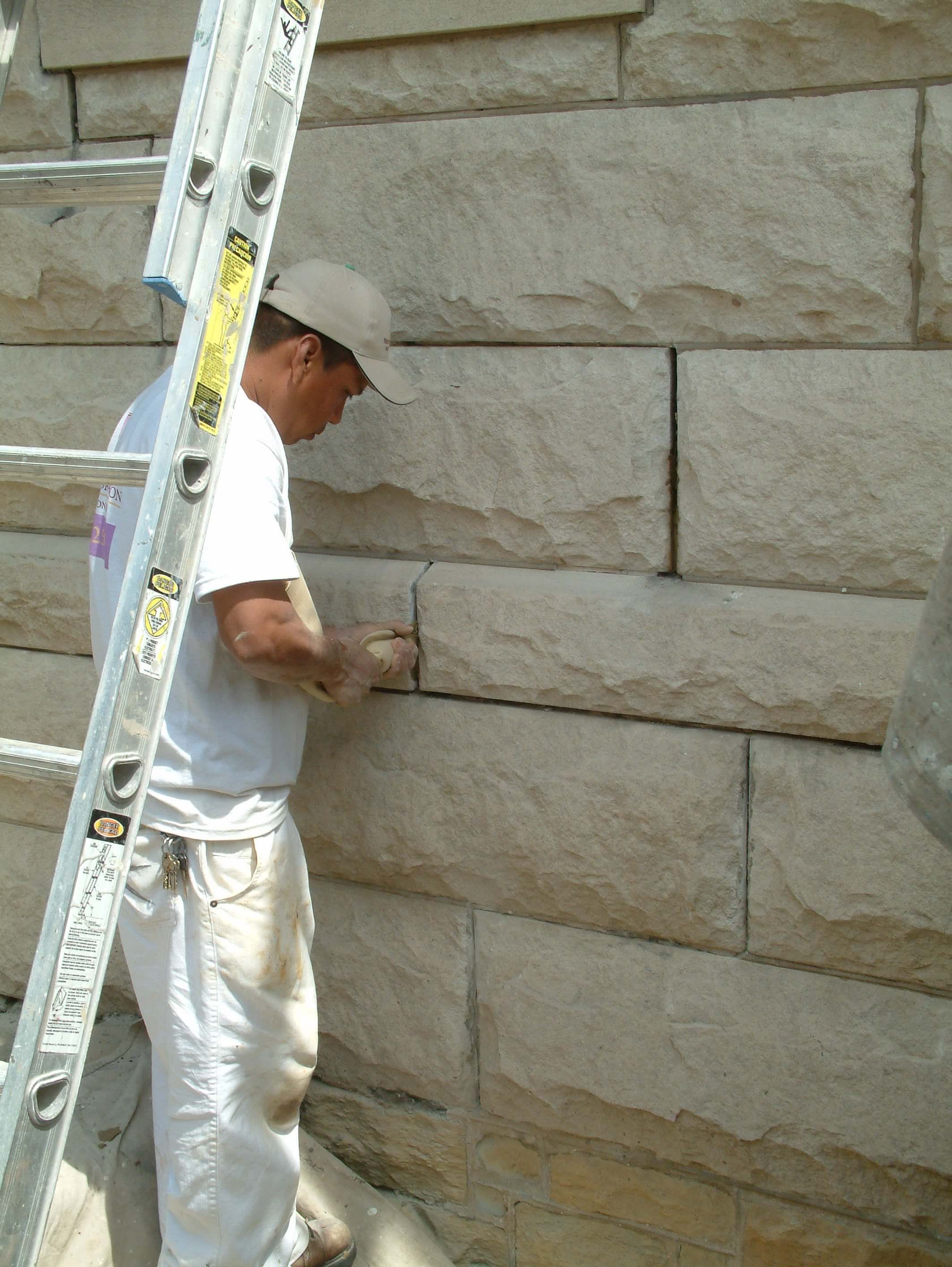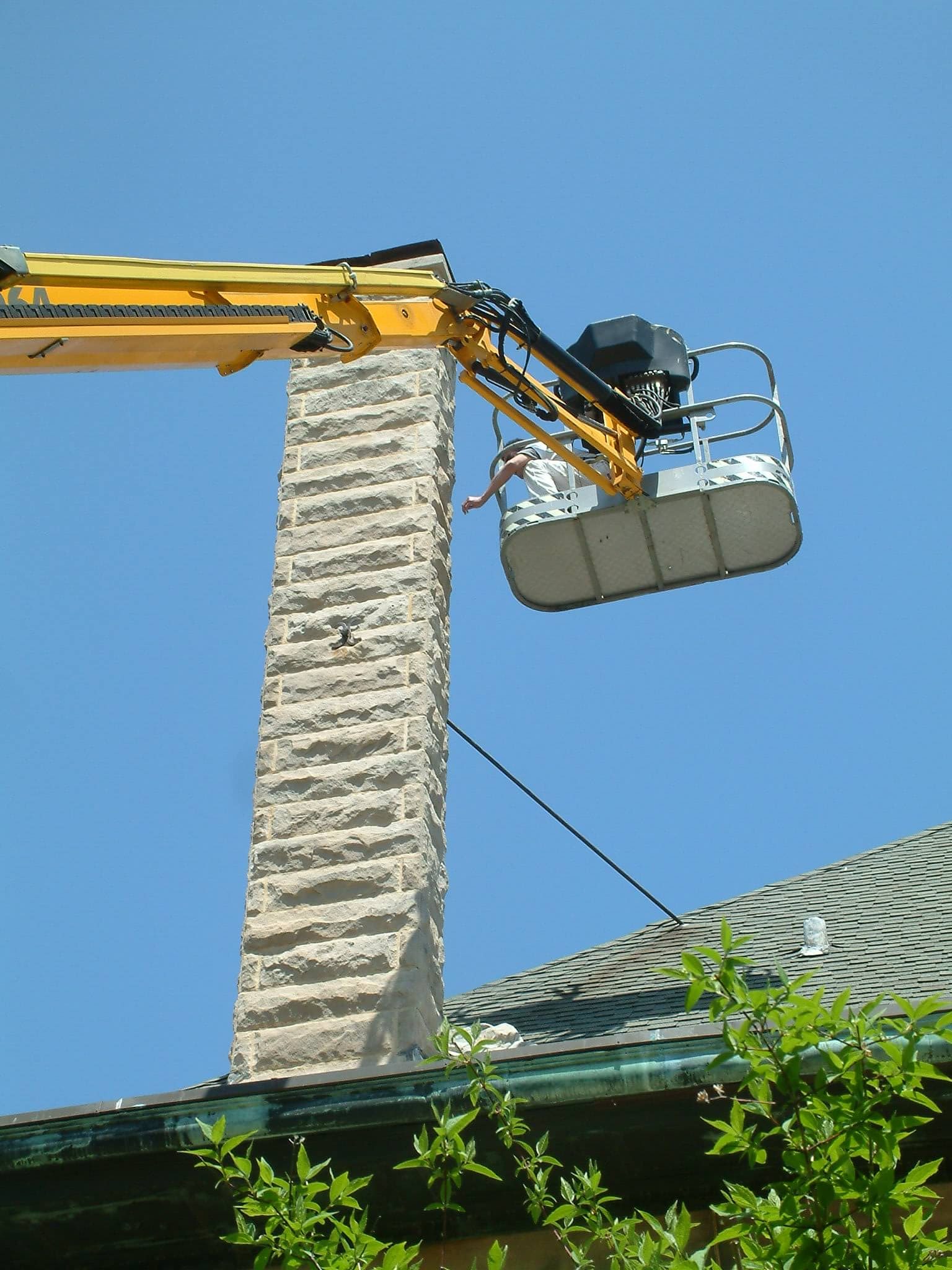Fortune Restoration was hired as the tuckpointing contractor to complete the masonry restoration to this Evanston Historic Landmark Home. This limestone home was built in 1895, with time and exposure to the elements of Lake Michigan, Fortune Restoration faced the task of restoring this beauty to its original state. To complete the mission, every joint had to be inspected, ground, and cleaned to achieve a clean slate for proper tuckpointing. The challenge in this project was in matching the 120 year old mortar color and to match the existing joint to be tooled. The chimneys height was also a challenge, but with the appropriate equipment this challenging chimney repair was met with success by this Evanston tuckpoint contractor. The home’s coach house also underwent restoration. The coach house project involved exterior painting, brick tuckpointing, and a variety of carpentry projects including replacing and repairing various areas of damaged crown molding, and rebuilding and replacing over 9 of its original windows. After a good cleaning with biodegradable stone wash, this Historic Evanston home is like new.
The Lakeshore Historic District contains a wide range of buildings designed in 19th and 20th century high styles. Of the 774 principal buildings in the survey area, over three-quarters can be classified as high-style architecture, reflecting the widespread use of architects designing individual homes on specific sites for upper middle class clients. There are many excellent examples of 19th century Gothic Revival, Italianate, Stick Style, and Queen Anne homes. Early-20th century high styles are also represented in the area, with Prairie, Craftsman, Colonial Revival, Dutch Colonial Revival, Tudor Revival, and Renaissance Revival examples.
Mid-century modern styles such as Contemporary and International can also be found. The high-style classification also includes 11 structures that are considered Neo-Traditional. These are non-historic (less than 50 years old) buildings with designs based on historic styles. Nineteenth-century vernacular house types are generally non-stylistic, with designs dependent on a builder’s craftsmanship. They were usually built by an owner or builder who relied on simple, practical techniques and locally available materials for overall design and plan, which resulted in a consistency in structural systems, materials, and millwork throughout a given community.
Vernacular buildings are most easily classified by their general shape, roof style, or floor plan, such as Gable Front or L-Form. Although these types were first built in the 19th century, they continued to be built into the early 20th century. The Lakeshore Historic District contains just 27 examples of 19th century vernacular buildings, only 3% of the total inventory. Beginning in the early 20th century, plans for popular house types were widely published in books and catalogs. The earliest of these house types was the American Foursquare. Bungalows of various sorts were built throughout the country until 1930. During the modern period, popular house types included Minimal Traditional, Ranch and the Split-Level. There are 44 examples of 20th-century popular types in the survey area—of this group, the American Foursquare and the Bungalow are the most well-represented types.













